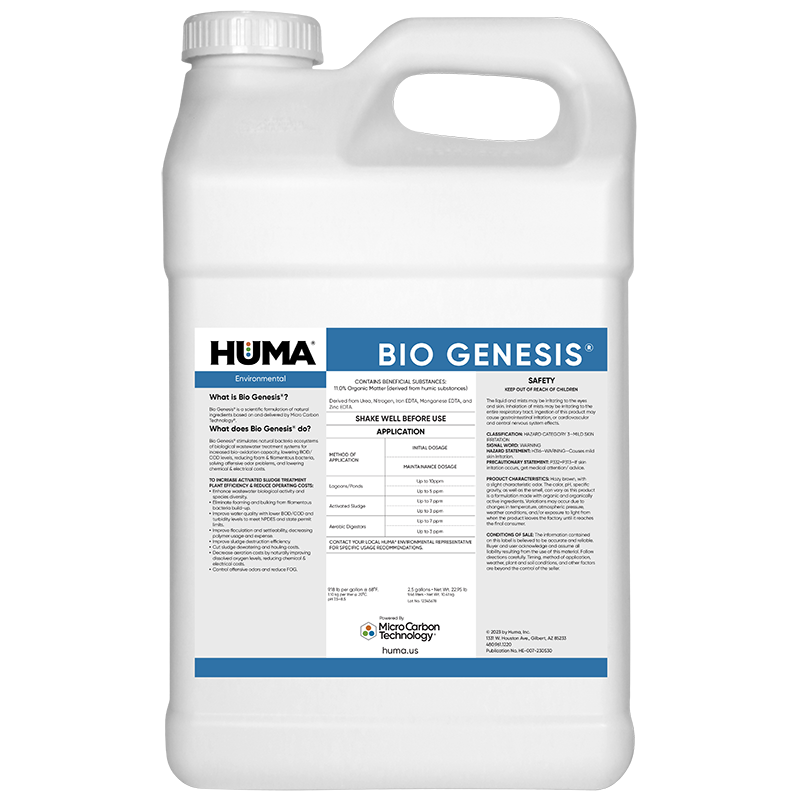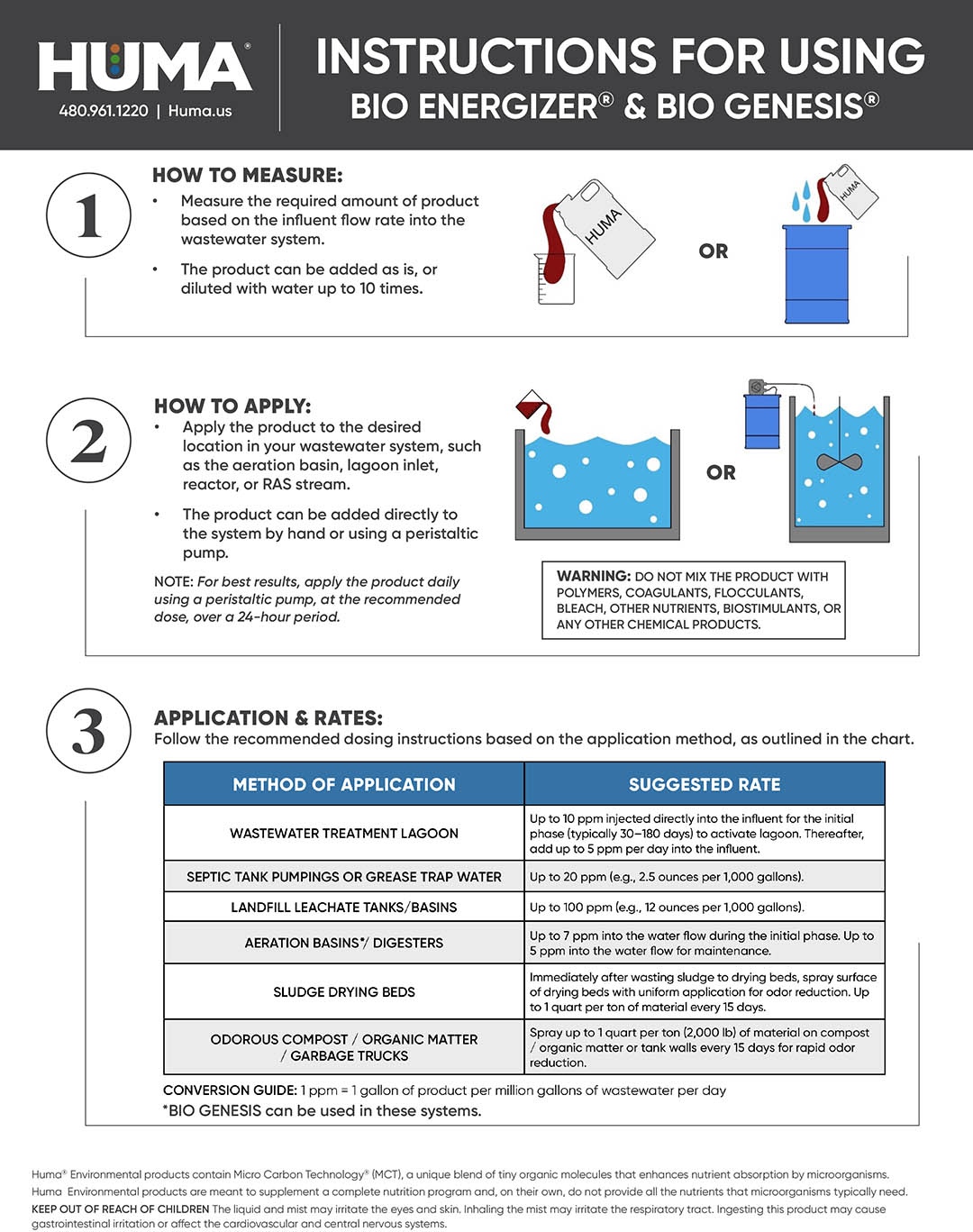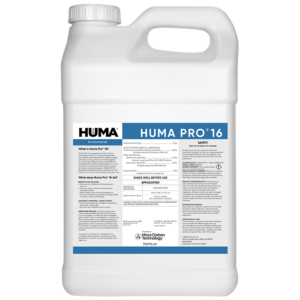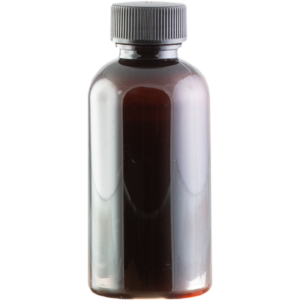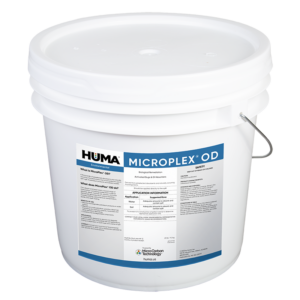Bio Genesis
Benefits of Use:
- Improves flocculation and settleability
- Improves SVI
- Sustains dissolved oxygen levels
- Decreases mechanical aeration and energy costs
- Reduces noxious odors
- Reduces coagulant and flocculant chemical use and costs
- Minimizes upsets
- Reduces chlorine disinfection demands
- Reduces filamentous bulking, foaming, and scum
- Reduces wasting, sludge volume, and out-of-service time
- Improves effluent water quality
FAQs
Related Videos
Huma Environmental Bio Genesis
View our Huma Environmental Bio Genesis Video
Learn More
Huma Environmental Wastewater Treatment Products
Huma Environmental wastewater treatment products are meant to work with all of the systems to proactive with biology. Our products stimulate the biology that is already present. A product line that stimulates what's already present
Learn More
Related Products
Related Case Studies

Bio Genesis® Reduces Foam and Increases Stability at Idaho Municipal Wastewater Treatment Facility
Problem A municipal wastewater treatment facility in Idaho uses a small, activated sludge system to treat 35,000 gallons per day (gpd); waste activated sludge (WAS) is removed from the system approximately every 2 to 3 weeks. The system frequently experienced intermittent foaming and settling issues, as well as seasonal impact from grease relating to the

Bio Genesis® Reduces Foam and Increases Stability at Arizona Municipal Wastewater Treatment Facility
Problem A municipal wastewater treatment facility in Arizona uses an activated sludge system with 4 oxidation ditches to treat approximately 9 million gallons per day. The system frequently experiences intermittent foaming and settling issues. The operator was looking for a solution to the foaming and settling issues that would also provide operational stability throughout the
Related Blog Posts

Land-Applied Sewage: Do Farmers Benefit from Recycled Sewage?
While controversial among activists and consumers, land application of septic and sewage sludge is not a new practice. Farmers have been land-applying raw sewage––at one time called "Night Soil"––to fields and crops for centuries.

Where Did the Water Go?
By Jared Alder, MS In England, it is estimated that around 700 million gallons of water—the equivalent of 1,200 Olympics–size swimming pools—is lost every day to leaks in the country’s vast water system. Often the water just rises out to the pavement and runs down the road. Utilities spend countless hours and a great deal of money and other resources trying to locate the sources of leaks, often tearing up roads multiple times in
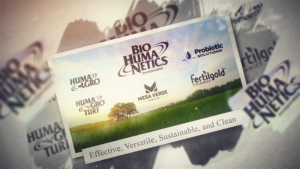
EARTH DAY 2020: Celebrating 50 Years
Fifty years ago today, on April 22, 1970, 20 million Americans took to the streets to protest environmental destruction and to celebrate the wonders of Planet Earth. The basic message was that we had to find new ways to live our lives, raise our food, and conduct our businesses that were environmentally friendly and sustainable—that

